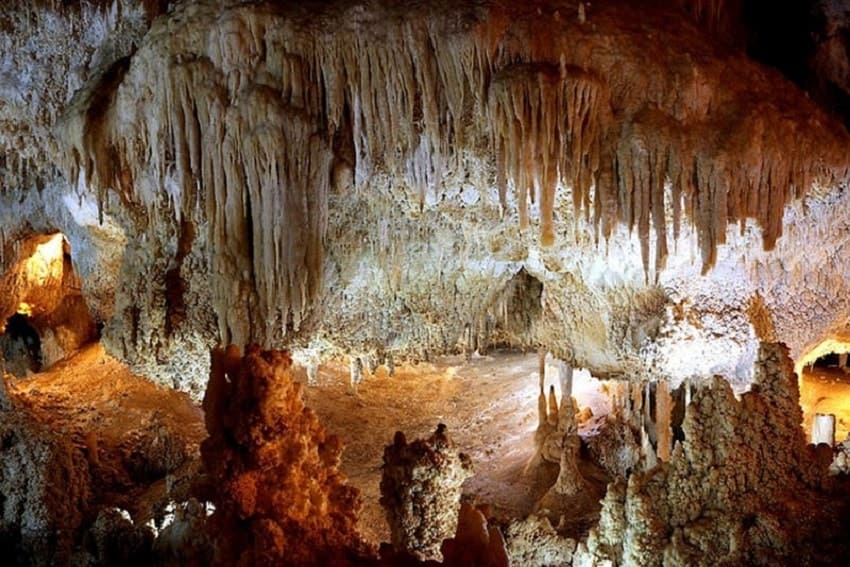Where is Qeshm salt cave
Qeshm salt cave is one of the natural monuments and places of interest in Hormozgan province, which is located 90 km from Qeshm city, in the southwestern part of this island and near its southern coast. (view on the map)
Distance from Qeshm Namakdan Cave to Chahkoh Gorge: 44 km
Distance from Qeshm Namakdan Cave to Mangrove Forest: 53 km
Distance from Qeshm Namakdan Cave to Bam Qeshm: 28 km
The history of Qeshm salt cave
It is better to know that the Qeshm salt cave is 500 million years old and experts consider its formation to be before the Cambrian period (one of the geological periods of the Paleozoic era). The multi-colored salt layers formed in the cave are tens of thousands of years old, so it is better not to touch any of the salt lamps and do not want to take a piece of it for ourselves. The interesting thing about Qeshm Salt Cave is that we are not dealing with ordinary salt. These salts have therapeutic properties. It is said that breathing in the air of the cave relieves allergies and asthma. This is like an exhibition whose panels are made of salt.
The best season to travel to Qeshm Salt Cave
From autumn to the end of April, it is a good season to travel to Qeshm. The weather is mild and pleasant and the heat of the sun will not bother you. Qeshm winter has a pleasant coolness and sightseeing will not be boring for you. If you like walking and walking in nature, we suggest that you walk this route. Inside this cave, especially in its depths, there is not enough light and a bright flashlight is needed to see the salt crystal stalactites. The roof of the salt cave has been covered with marble and crystal lanterns in different shapes and created a unique sight. Try to travel with someone who is familiar with this cave so that you know the way and its well.
?What is Qeshm Salt Cave like
Flows of salt water can be seen on the floor of Qeshm Salt Cave, which creates a wonderful view for visitors. The humidity of the island's air and the penetration of water in the caves causes the saturated salt water to condense on the body of the jellyfish and causes the continuous formation of these jellyfish. This water flow in the heart of Namakdan Mountain is a permanent underground flow and opens the way out of this cave. In front of the Qeshm salt cave, there is a natural white pond where the water that comes out of the cave collects inside it and looks like a salt spring on the mountainside. This spring flows all year round and the water flow can also be seen in the inner parts of the salt cave. It is interesting to know that sometimes the salt water in the cave reflects images like a mirror, and this creates a beautiful and unique view in this area. The main bed of this spring has a red color and you can see deposits of ocher mud (refractory soil) in it. The sediments formed in this area also contain iron oxide compounds and especially hematite. The upper part or the roof of the cave also has a beautiful structure and is covered by crystal lanterns that have different shapes.

